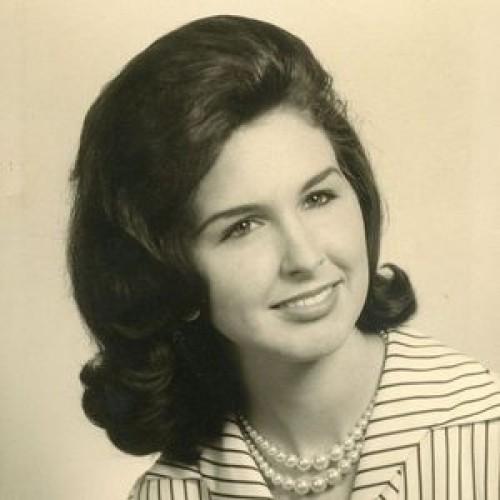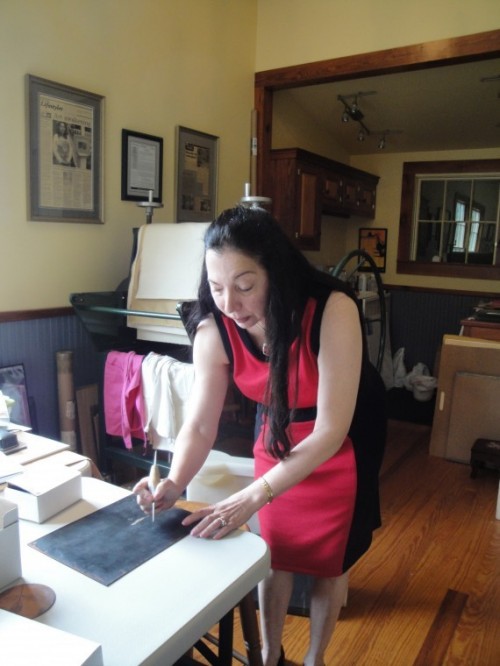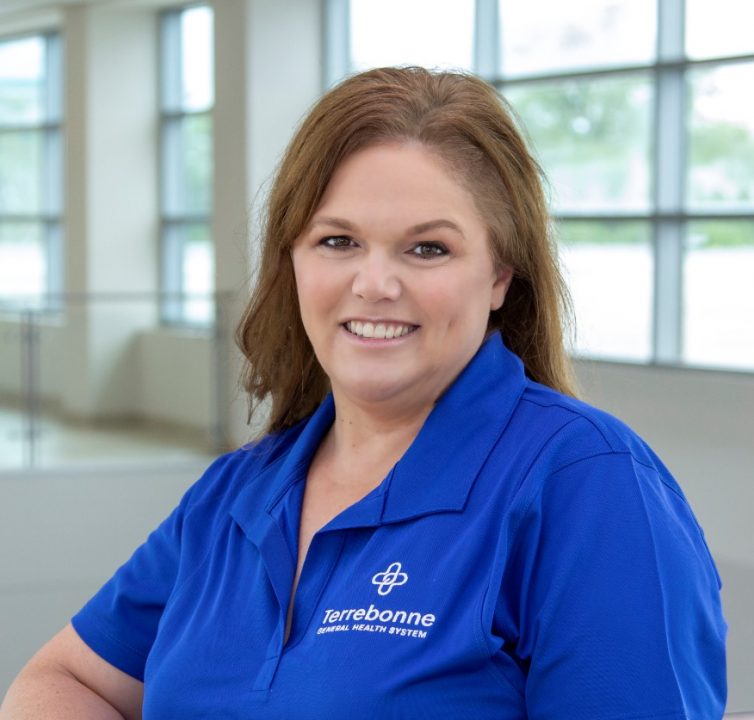
Donna Ruth Duggan Lile
October 2, 2012
Chabert hit with added cuts and job losses
October 5, 2012Susan Talbot Hoffmann is known not only locally for her artwork but also has been making a name for herself in various parts of the country. While her etchings and printmaking are turning heads, she wasn’t always focused on creating works of art.
The Thibodaux native holds a doctorate in clinical chemistry and was building a career in research, having worked her way up to an assistant professorship at Tulane Medical Center’s U.S.-Japan Biomedical Research Laboratories, but art was always an interest. While growing up, she drew animals, family members and children she baby-sat. During her research years, she would illustrate slides in her presentations.
But after a brain tumor nearly took her life in 1989 and left her with paralysis, art became a mode of therapy and replaced chemistry as her primary work. She studied all artistic disciplines at Nicholls State University in six years, gaining not only artistic skills and muscle control but also a degree in 1999. Hoffmann’s scientific mind latched on to one artistic technique, etching, because of the chemistry involved in the process.
It’s one of her etchings, an image of Colonel Short’s Villa from her collection “Southern Splendor: the Garden District of New Orleans,” that’s been accepted into a prestigious art show Oct. 2-26 at the National Arts Club in New York City. The show is the 116th Annual Exhibition of the Catharine Lorillard Wolfe Art Club, established in 1896 to honor the only female founding member of the Metropolitan Museum of Art. Its members are represented in museums, galleries and prestigious art collections around the world.
With this, Hoffmann’s third acceptance into the organization’s show, she is now eligible for election to membership. To qualify, an artist must be accepted into the show three times in 10 years, but Hoffmann has achieved that feat in only six years.
“This is like, real. This is happening to me,” she said, “but it’s, like, to worry in the back of your mind: Am I going to be able to do this?” Her membership application requires not only a resume, but computer images of her work, photographs of her art, a list of publications and juried art shows in which she’s been included.
Fortunately, her list is long – her art has been displayed in the Museum of San Diego, New Orleans Museum of Art, the Plastic Club in Philadelphia and at least 50 galleries nationwide. She’s earned awards in etching and intaglio/printmaking by American Color Print Society, an international organization in which she is one of only 88 etchers (and the only woman from Louisiana), as well as other organizations.
In preparation for etchings, she draws and takes photographs on site to help gain a feeling for her subject. That feeling not only helps her to execute the drawings and etchings but also color the printing plates. For instance, several of her 18 Garden District images are blue due to the influence felt from jazz music in the city. She’s captured 40 historic sites with her etchings.
Once she has created her drawing, Hoffmann uses needles to scratch a reverse image of the drawing into the acid-resistant coating of a copper plate to expose the metal. The plate is then placed into an acid tank where the etching occurs. Once cleaned, Hoffmann then pushes ink into the lines of the etched plate, which is then placed onto her 1,000-pound manual printing press where she – with assistance from husband Andrew Hoffmann III, a surgical pathologist – completes the process of pressing the image onto paper.
“My watercolors free me from doing this tedious, tight work of etching,” Hoffmann said. She combines embossing and printmaking with watercolors to create delicate reproductions of plants and flowers – images painted from live subjects, not cut flowers, to capture their living images. She adds a scientific element to her creations by working the plants’ botanical names into her compositions; it helps those who view her art discover relations between plants and gives Hoffmann something to ponder while creating her artwork. Garlic, for example, is an amaryllis, and the cherry is in the rose family.
She’s been developing “Jardin Potager,” a collection of recipe cards that pair her embossed watercolors of flowers and vegetables grown by her now-deceased father, John K. Talbot, with her mother Jocelyn’s recipes. Hoffmann said her father was instrumental in her ability to study art. Unable to drive because of the lasting effects from the brain tumor, he drove her daily to Nicholls and carried her art supplies upstairs for six years. Since the tumor nearly ended her life, Hoffmann said she believes her father’s involvement was his way of connecting with her during the recovery process.
“I am convinced that God created me to be an artist,” Hoffmann said. The brain tumor and ensuing coma and epidural hematoma, which led to paralysis, was a great blessing from God, she said, because it brought her a calmness needed in the hours of concentration needed to produce a work of art. The paralysis of the right side of her face resulted in a permanent squint Hoffmann uses when observing her subjects; and the stroke she suffered during that time resulted in a weak hand that enables her to have a very sensitive hand when drawing.
“I think people have everything inside them; it just needs some means to come out,” Hoffmann said. “I think God is allowing me to do this. If I’m struggling with something, I say a prayer … Art involves a lot of silent time, so something is going on in your mind … a lot of it is prayer, whether you call it that or not.
“Art is just a reproduction of God’s creation,” she said. “That’s why I love living things – that’s so related to God.”
Susan Talbot Hoffmann demonstrates an etching of a copper plate.
Hoffmann’s etching was accepted into the 116th Annual Exhibition of the Catharine Lorillard Wolfe Art Club in New York City.








